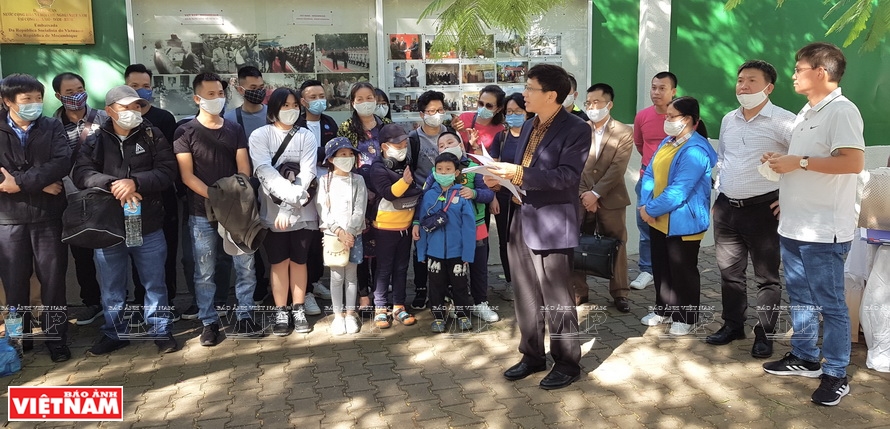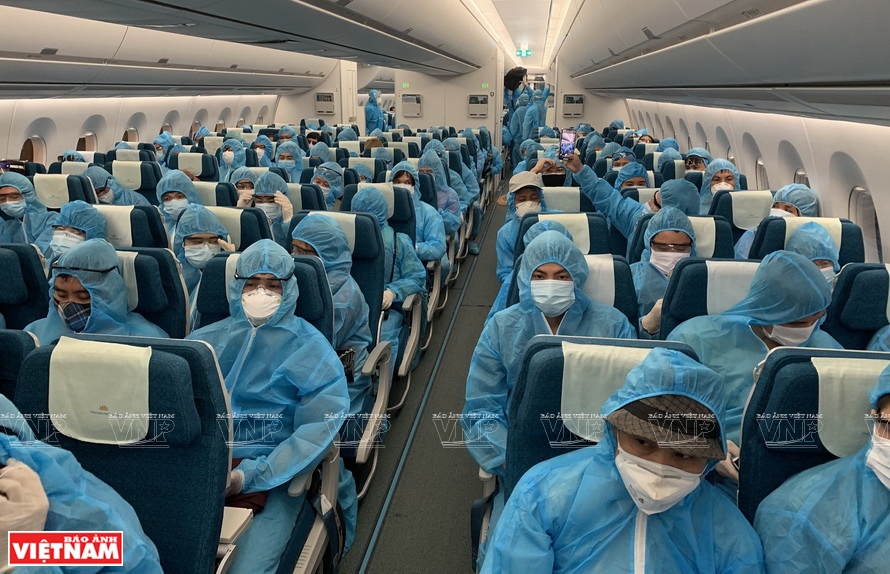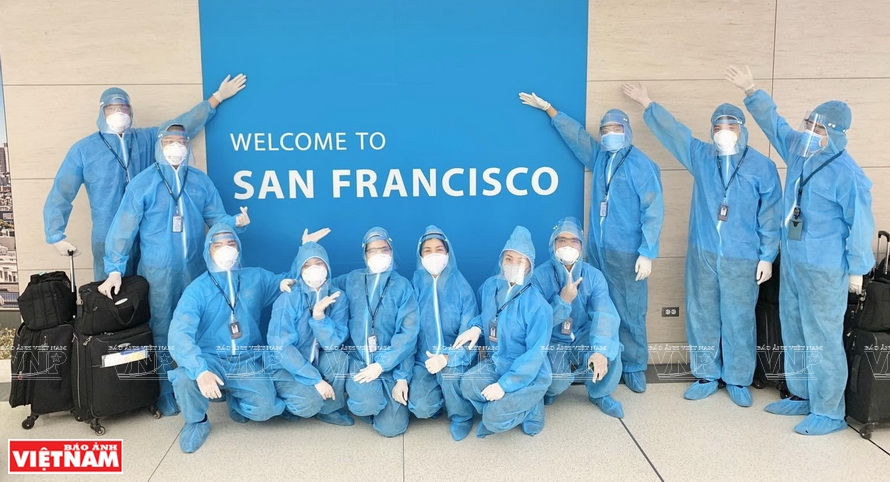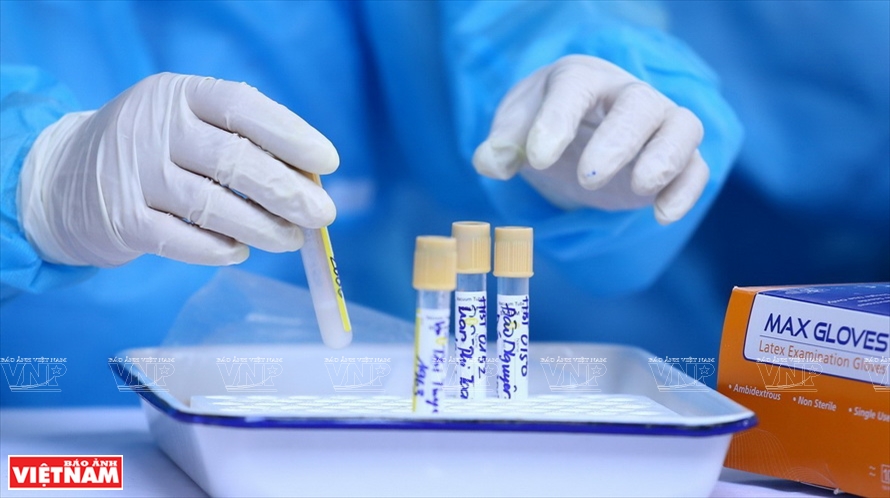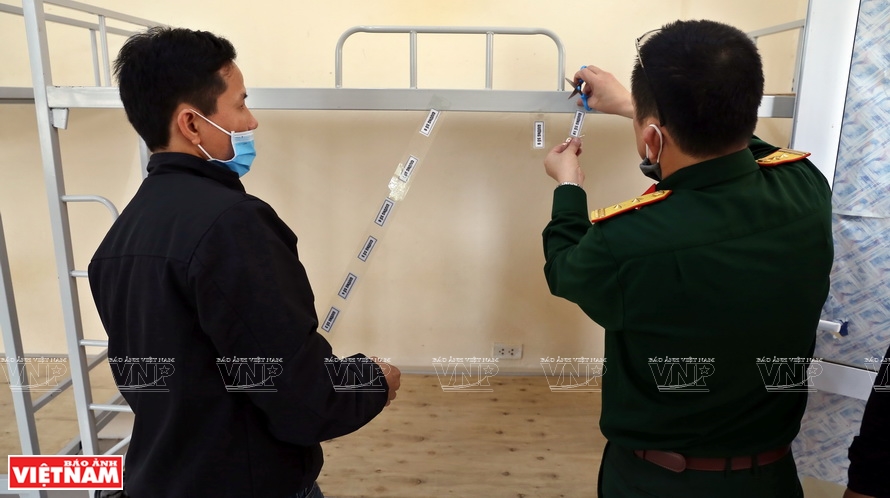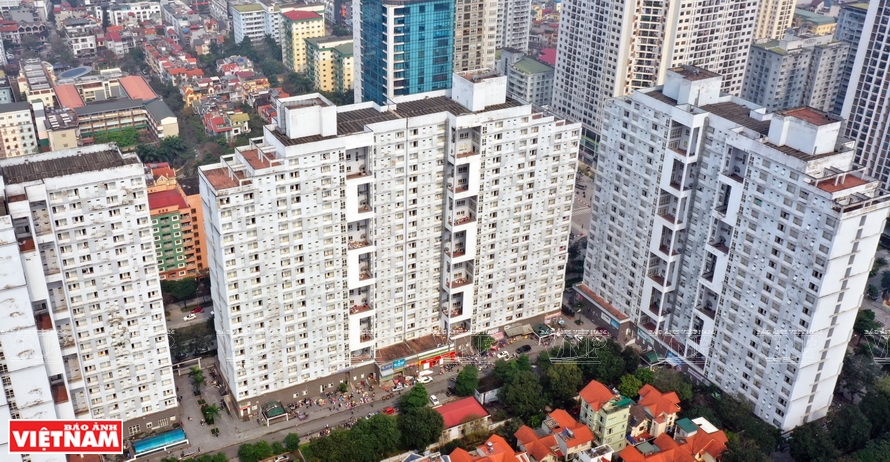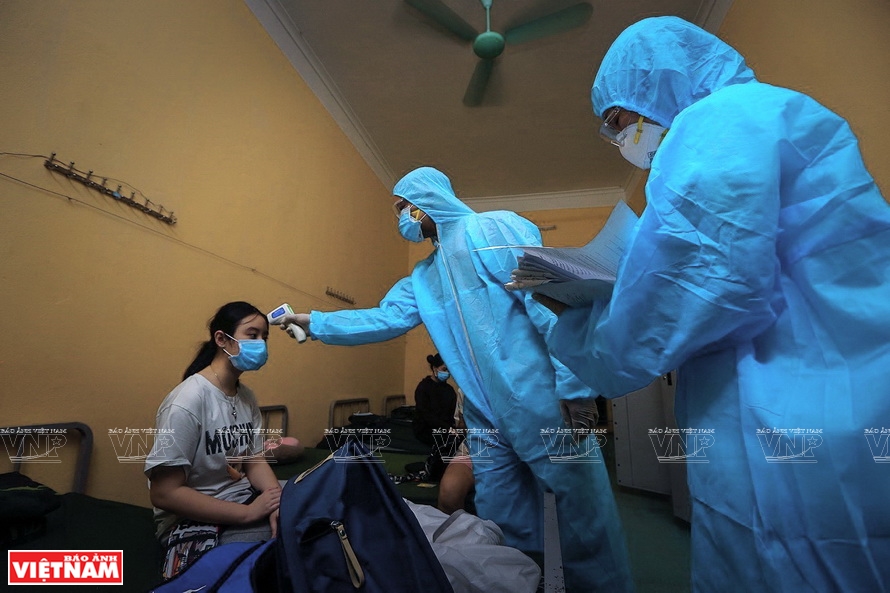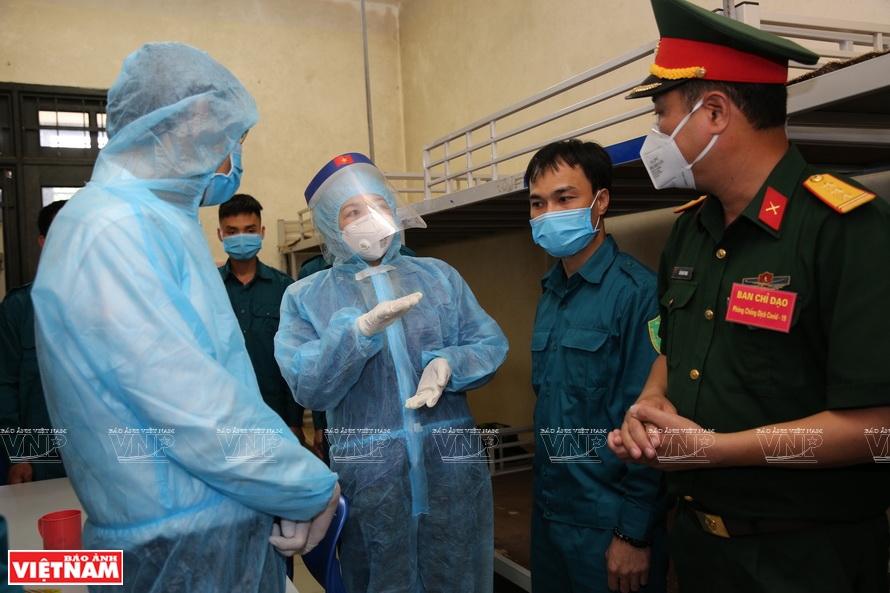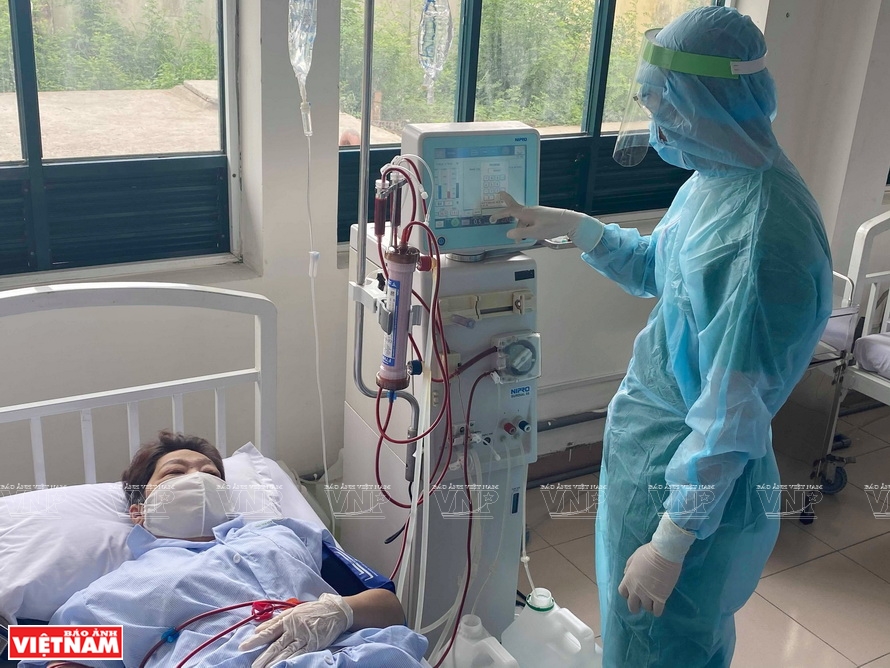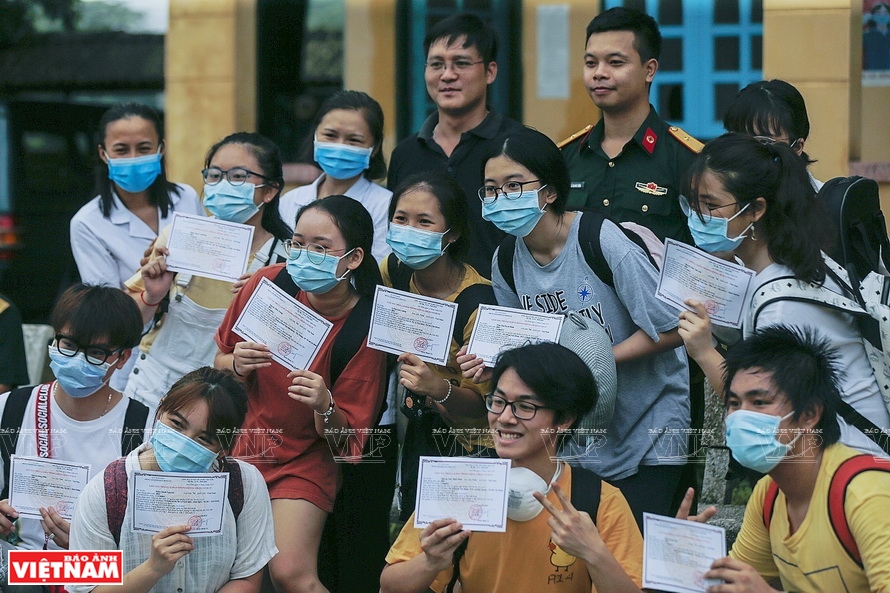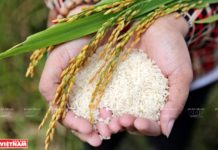On January 25, only three days after the first COVID-19 patient was reported in Vietnam, the Prime Minister chaired a cabinet meeting, asking concerned agencies and organizations to promptly support Vietnamese citizens in epidemic-affected areas around the world.
While struggling against COVID-19 in the country for the last eight months, Vietnam has not neglected the needs and expectations of its citizens living far away from home. Concerned authorities have taken comprehensive efforts to help overseas Vietnamese nationals who got stuck in mass lockdowns that were imposed to contain the spread of the novel coronavirus. This work was done in a spirit of “leaving no one behind”, ensuring everyone who needed it to receive needed support.
At a meeting of the National Steering Committee for COVID-19 Prevention and Control on March 18, Deputy Prime Minister Vu Duc Dam reiterated that “the Party, State and people will take the greatest effort and necessary measures to best assist overseas Vietnamese who are in urgent need to return home.” He stressed that such support was “the sentiment of fellow citizens.”
|
As assigned by the government, Vietnam Airlines, operated a flight on February 10 to return Vietnamese nationals from Wuhan – the epicenter of the Covid-19 outbreak. Photo: Viet Linh
The Airbus A350 aircraft of Vietnam Airlines takes off from Hanoi to Equatorial Guinea
to bring home Vietnamese citizens, with many thought to be carrying COVID-19. Photo: Viet Linh The positive pressure room in the airplane carrying Vietnamese citizens home from Equatorial Guinea. Photo: Viet Linh
Members of the Vietnamese Embassy in South Africa go to the airport to provide essential supplies
and assist with boarding procedures for people to return home. Photo: Phi Hung
The Vietnamese Embassy in Mozambique sends staff to the airport
to assist Vietnamese people before their flight to return home. Photo: Phi Hung 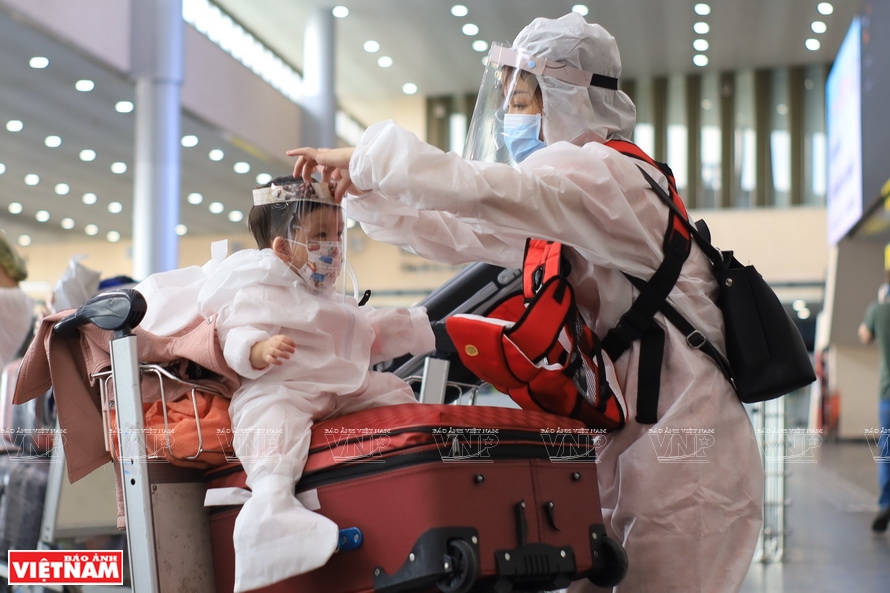
Vietnamese people in Russia wear protective clothing to prevent COVID-19 before their return flight. Photo: Tran Hieu
The first flight to bring Vietnamese citizens home from Cyprus and Saudi Arabia. Photo: Vietnam Airlines
Guiding Vietnamese citizens from Equatorial Guinea to the quarantine area
at the Central Hospital for Tropical Diseases No.2 in Dong Anh, Hanoi. Photo: VNA |
The Ministry of Foreign Affairs has played a key role in this work, which is “not only a political task but also an instruction from the heart” as Deputy Foreign Minister To Anh Dung has said. In this spirit, Vietnamese embassies from all over the world have worked hard for the past few months to support citizens in their journey to return home.
“I can only sleep well when my country people have safely landed,” said Vietnamese Ambassador to India Pham Sanh Chau. It took Ambassador Chau and the staff at the embassy as long as two months to arrange a flight in May to carry home Vietnamese expatriates in India. The embassy made great efforts to be able to gather people from different parts of India to New Delhi to fly home. This was truly challenging given the lockdown to contain the outbreak of the pandemic in one of the world’s hardest-hit countries.
The staff at the Vietnamese embassy in Japan also had a huge workload in the past few months as the embassy operated a 24/7 hotline to assist citizens impacted by the pandemic, according to Ambassador Vu Hong Nam.
In the US, the world’s largest COVID-19 epicenter, Ambassador Ha Kim Ngoc has joined an online exchange between Vietnamese missions and the Association of Vietnamese students and young people in the US to update about them COVID-19 and the embassy’s assistance for Vietnamese citizens. Through this exchange program, the embassy and other US-based agencies of Vietnam have received nearly 1,000 requests to return home, which have been promptly forwarded to authorities at home for handling.
Vietnam’s initial success in battling COVID-19, including the protection of its citizens, has been recognized by the international community.
Love for fellow citizens
Overseas Vietnamese have been brought home in a caring and supportive manner, receiving not only helpful advice and support in processing formalities overseas to go home, but also good care when being quarantined in their homeland. Since early this year, Vietnam has established thousands of quarantine zones across the country, providing healthcare and other material support for people coming back from abroad.
COVID-19 patient No. 89, a student coming back from the US, said the care of doctors and health workers made his two-week treatment at Cu Chi field hospital a pleasant experience.
Thanh Tran, who lives in Europe, was grateful to his country for “opening its arms” to welcome him home. Thanh was aboard a 300-seat aircraft which carried only 18 passengers during a charter flight of the Vietnamese government to rescue its citizens from the COVID-19 crisis. Thanh felt lucky because his was one of the last flights to Vietnam from Europe before the continent closed its borders.
|
Disinfecting Vietnamese citizens’ luggage from Wuhan (China) at Van Don airport. Photo: Viet Linh
The My Dinh dormitory in Hanoi is used as a quarantine area. Photo: Cong Dat / VNP
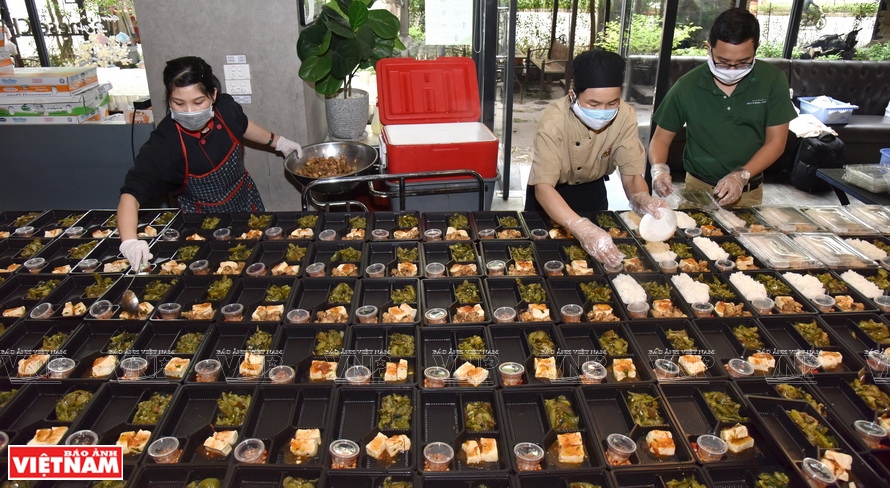 Meal boxes sent to doctors at the Central Hospital for Tropical Diseases. Photo: Thanh Giang / VNP |
| The Vietnamese government has battled against COVID-19 in the spirit of “leaving no one behind” and “the people’s life is above all”. |
In a working session with the National Steering Committee for COVID-19 Prevention and Control on July 10, Prime Minister Nguyen Xuan Phuc stressed that taking Vietnamese citizens back home was an urgent need. He reaffirmed that the government would continue organizing flights to bring home Vietnamese nationals because “when the blood sheds, the heart aches”. Their hardship concerned the Party, State, Government and Vietnamese people.
With the same code of “love for fellow citizens”, the flights carrying Vietnamese nationals from pandemic-hit areas across the globe have made Vietnamese people in general, and overseas Vietnamese in particular, deeply understand that wherever they stay, their homeland is where to come back to whenever they need.
Photos: Viet Linh, Tran Hieu, Phi Hung,
Cong Dat, Thanh Giang, VNA & Vietnam Airlines
Translated by Hong Hanh

